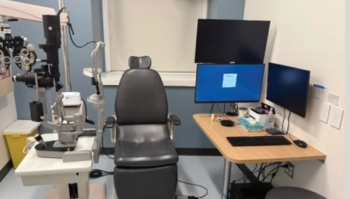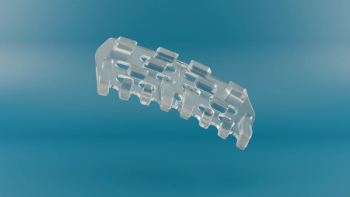
Hyperaemia is a common cause for changing medication
Hyperaemia is one of the main reasons why patients with glaucoma do not comply with or persist with their topical therapeutic regimen.
Key Points
High efficacy and good tolerance of prostaglandin analogs such as latanoprost (Xalatan, Pfizer), bimatoprost (Lumigan, Allergan) and travoprost (Travatan, Alcon Laboratories) are often used as first-line therapies for the treatment of elevated IOP associated with open-angle glaucoma and ocular hypertension. They are considered by most ophthalmologists as the gold standard in topical glaucoma therapy. These drugs are associated with some side effects, however, including hyperaemia, which may lead to cessation of treatment or a switch to other therapies.
In the Glaucoma Adherence and Persistency Study (GAPS), hyperaemia was the most commonly reported side effect, and was the factor most causative in switching therapy. The GAPS data were the foundation for the model presented at the annual meeting of the Association for Research in Vision and Opthalmology.
"Switching medications may help the patient find a more efficient and tolerable therapy, but this switch results in higher overall costs," said Dr Scwartz.
She and her colleagues conducted a recent study aimed at estimating and comparing the cost of changing therapy due to hyperaemia in patients with glaucoma treated initially with latanoprost, bimatoprost or travoprost monotherapy.
Using the HealthCore Integrated Research database, 13,977 patients with glaucoma diagnosed who were newly treated with latanoprost, bimatoprost or travoprost monotherapy were identified. From this patient cohort, 8,743 patients started treatment with prostaglandin analog monotherapy only (latanoprost, 5726; bimatoprost, 16,633; travoprost 1,384).
The data showed that across all treatment groups, costs among hyperaemia-free patients were $73.67 versus $140.02 for those who discontinued the initial prostaglandin analog due to hyperaemia. Results also showed that the per patient costs were lowest in the group initially treated with latanoprost. Using latanoprost as the reference product and only including cost of initial drug and an additional office visit, total per patient incremental costs due to each hyperaemia-driven change in therapy were $5.92 and $5.43 for bimatoprost and travoprost, respectively.
"Hyperaemia is the most frequently reported prostaglandin-[analog]-associated adverse event and occurs less frequently among patients treated initially with latanoprost compared [with] bimatoprost or travoprost, confirming previously reported findings," said Sameer Kotak, BSPharm, MS, associate director of global outcomes research at Pfizer Inc., New York.
According to Dr Schwartz, all three prostglandin analogs can achieve similar IOP reductions, however, latanoprost is less frequently associated with hyperaemia. This is likely due to the lack of a double-bond on a benzene ring in its structure that is present in bimatoprost and travoprost and suspected to be the cause of hyperaemia with these drugs.
"All three drugs can achieve similar IOP reductions," said Dr Schwartz. "Therefore, latanoprost may be the [most] cost-effective choice simply because it has a lower incidence of hyperaemia and therefore a higher probability that patients [takin] latanprost will not need to switch to another therapy as frequently."
Incidences of hyperaemia vary between drug agents and classes. Hyperaemia occurs less frequently with other medications such as the beta-blockers, however, the prostaglandin analogs have a higher efficacy in lowering IOP, creating a tug-of-war among efficacy, side effects, and cost, according to Schwartz.
"In clinical practice, we do not expect our patients to tolerate permanent hyperaemia. From GAPS, we could see that the hyperaemia did not subside over time. We start [treating] them [with] a prostaglandin analog and choose from this group of agents based on clinical judgment. If a patient has either a lack of efficacy or an adverse reaction to the drug, including the degree of hyperaemia, then we consult...about alternative choices. We could switch within the prostaglandin [analog] class to an agent that has potentially less hyperaemia, or switch outside of this class, or consider laser trabeculoplasty."
Laser trabeculoplasty
Selective laser trabeculoplasty (SLT) has become a very common, efficient and safe procedure in glaucoma care. Though SLT represents a good therapeutic option, the procedure is not equally effective in reaching the targeted IOP in all patients. The chance of laser therapy allowing patients to stop drop therapy essentially depends upon how far they are from their ideal pressure.
"If patients [are] dissatisfied with the level of hyperaemia, then they are more likely to discontinue the drug," said Schwartz. "Adherence to therapy has a significant financial impact, and in today's economy, where healthcare dollars are being watched very closely, choosing a medication with a lower rate of hyperaemia may be the wiser financial choice.
"If a patient is not adherent, the chance of glaucomatous progression rises, creaing higher costs for the patient, insurance company and overall for society," she concluded.
Newsletter
Get the essential updates shaping the future of pharma manufacturing and compliance—subscribe today to Pharmaceutical Technology and never miss a breakthrough.













































